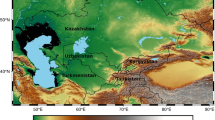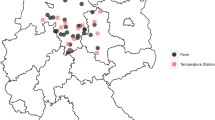Abstract
Climate change poses a major challenge to humanity, especially in its impact on agriculture, a challenge that a responsible AI should meet. In this paper, we examine a CBR system (PBI-CBR) designed to aid sustainable dairy farming by supporting grassland management, through accurate crop growth prediction. As climate changes, PBI-CBR’s historical cases become less useful in predicting future grass growth. Hence, we extend PBI-CBR using data augmentation, to specifically handle disruptive climate events, using a counterfactual method (from XAI). Study 1 shows that historical, extreme climate-events (climate outlier cases) tend to be used by PBI-CBR to predict grass growth during climate disrupted periods. Study 2 shows that synthetic outliers, generated as counterfactuals on an outlier-boundary, improve the predictive accuracy of PBI-CBR, during the drought of 2018. This study also shows that an case-based counterfactual method does better than a benchmark, constraint-guided method.
Access this chapter
Tax calculation will be finalised at checkout
Purchases are for personal use only
Similar content being viewed by others
Notes
- 1.
Note, this is after pre-processing to remove noisy cases (originally, N = 138,970).
- 2.
A unique outlier is a case with an extreme value on any of its weather features.
- 3.
Similar results were found for tests of 2017, though less marked, as that year has fewer disruptive events: PBI-CBRO (MAE = 18.58 kg/DM/ha) did better than PBI-CBREX (MAE = 18.62 kg /DM/ha) without the climate outliers, t(18610) = 1.9, p < 0.05, one-tailed.
References
Rosenzweig, C., Iglesias, A., Yang, X.B., Epstein, P.R., Chivian, E.: Climate Change and U.S. Agriculture. centre for health and the global environment. Harvard Medical School, Boston, MA, USA (2000)
Kenny, E.M., et al.: Predicting grass growth for sustainable dairy farming: a CBR system using bayesian case-exclusion and post-hoc, personalized explanation-by-example (XAI). In: Bach, K., Marling, C. (eds.) ICCBR 2019. LNCS (LNAI), vol. 11680, pp. 172–187. Springer, Cham (2019). https://doi.org/10.1007/978-3-030-29249-2_12
Kenny, E.M., et al.: Bayesian case-exclusion for sustainable farming. In: IJCAI-20 (2020)
Keane, M.T., Smyth, B.: Good counterfactuals and where to find them: a case-based technique for generating counterfactuals for explainable AI (XAI). In: Watson, I., Weber, R. (eds.) ICCBR 2020. LNCS (LNAI), vol. 12311, pp. 163–178. Springer, Cham (2020). https://doi.org/10.1007/978-3-030-58342-2_11
EU Parliament Briefing on the EU dairy sector (2018). https://www.europarl.europa.eu/RegData/etudes/BRIE/2018/630345/EPRS_BRI(2018)630345_EN.pdf
Altieri, M.A.: Agroecology: The Science of Sustainable Agriculture. CRC Press, Boca Raton (2018)
Teagasc: The Dairy Carbon Navigator: Improving carbon efficiency on Irish dairy farms
Ruelle, E., Hennessy, D., Delaby, L.: Development of the Moorepark St Gilles grass growth model (MoSt GG model). Eur. J. Agron. 99, 80–91 (2018)
Hanrahan, L., et al.: PastureBase Ireland. Comput. Electron. Agric. 136, 193–201 (2017)
Hurtado-Uria, C., Hennessy, D., Shalloo, L., O’Connor, D., Delaby, L.: Relationships between meteorological data and grass growth over time in the south of Ireland. Ir. Geogr. 46(3), 175–201 (2013)
Karimi, A.H., Barthe, G., Schölkopf, B., Valera, I.: A survey of algorithmic recourse: definitions, formulations, solutions, and prospects. arXiv preprint arXiv:2010.04050 (2020)
Keane, M.T., Kenny, E.M., Delaney, E., Smyth, B.: If only we had better counterfactual explanations. In: IJCAI-21 (2021)
Dodge, J., Liao, Q.V., Zhang, Y., Bellamy, R.K., Dugan, C.: Explaining models. In: IUI-19, pp. 275–285 (2019)
Nugent, C., Doyle, D., Cunningham, P.: Gaining insight through case-based explanation. J. Intell. Inf. Syst. 32(3), 267–295 (2009)
McKenna, E., Smyth, B.: Competence-guided case-base editing techniques. In: Blanzieri, E., Portinale, L. (eds.) EWCBR 2000. LNCS, vol. 1898, pp. 186–197. Springer, Heidelberg (2000). https://doi.org/10.1007/3-540-44527-7_17
Dasarathy, B.V.: Minimal consistent set (MCS) identification for optimal nearest neighbor decision systems design. IEEE Trans. Syst. Man Cybern. 24(3), 511–517 (1994)
Wachter, S., Mittelstadt, B., Russell, C.: Counterfactual explanations without opening the black box: automated decisions and the GDPR. Harv. J. L. Tech. 31, 841 (2018)
Mothilal, R.K., Sharma, A., Tan, C.: Explaining machine learning classifiers through diverse counterfactual explanations. In: FAT*20, pp. 607–617 (2020)
Schleich, M., Geng, Z., Zhang, Y., Suciu, D.: GeCo: quality counterfactual explanations in real time. arXiv preprint arXiv:2101.01292 (2021)
Smyth, B., Keane, M.T.: A few good counterfactuals. arXiv preprint:2101.09056 (2021)
Smyth, B., Keane, M.T.: Remembering to forget. In: Proceedings of the 14th international Joint Conference on Artificial intelligence (IJCAI-95), pp. 377–382 (1995)
Hasan, M.G.M.M.: Use case of counterfactual examples: data augmentation. In: Proceedings of Student Research and Creative Inquiry Day (2020)
Subbaswamy, A., Saria, S.: Counterfactual normalization: proactively addressing dataset shift using causal mechanisms. In: UAI-18, pp. 947–957 (2018)
Zeng, X., Li, Y., Zhai, Y., Zhang, Y.: Counterfactual generator. In: Proceedings of the Conference on Empirical Methods in Natural Language Processing, pp. 7270–7280 (2020)
Pitis, S., Creager, E., Garg, A.: Counterfactual data augmentation using locally factored dynamics. In: Advances in Neural Information Processing Systems (2020)
Förster, M., Klier, M., Kluge, K., Sigler, I.: Fostering human agency: a process for the design of user-centric XAI systems. In: ICIS-2020, paper 1963 (2020)
Temraz, M., Keane, M.T.: Solving the class imbalance problem using a counterfactual method for data augmentation. Under review (2021)
Author information
Authors and Affiliations
Corresponding author
Editor information
Editors and Affiliations
Rights and permissions
Copyright information
© 2021 Springer Nature Switzerland AG
About this paper
Cite this paper
Temraz, M., Kenny, E.M., Ruelle, E., Shalloo, L., Smyth, B., Keane, M.T. (2021). Handling Climate Change Using Counterfactuals: Using Counterfactuals in Data Augmentation to Predict Crop Growth in an Uncertain Climate Future. In: Sánchez-Ruiz, A.A., Floyd, M.W. (eds) Case-Based Reasoning Research and Development. ICCBR 2021. Lecture Notes in Computer Science(), vol 12877. Springer, Cham. https://doi.org/10.1007/978-3-030-86957-1_15
Download citation
DOI: https://doi.org/10.1007/978-3-030-86957-1_15
Published:
Publisher Name: Springer, Cham
Print ISBN: 978-3-030-86956-4
Online ISBN: 978-3-030-86957-1
eBook Packages: Computer ScienceComputer Science (R0)




